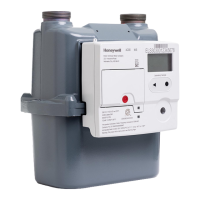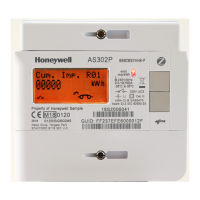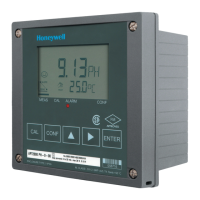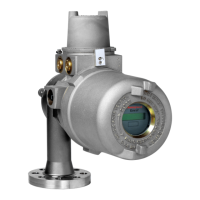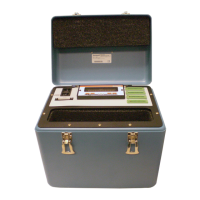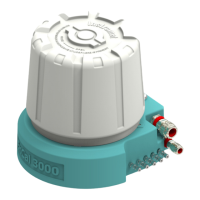124
the problem point(s). If the Fill Cycle goes to 0 psig in 1-2 seconds with the line
disconnected, assume the restriction is at the in-line filter or the sample tubing (or the
check valve if the line leak option is used). If disconnecting the tube makes no
difference, the flow restriction is in the sample valve for that point or in one of the 10–
port manifolds.
• Slowly Returns to 0 During Fill Cycle - All Points: This indicates an internal flow
restriction. The gas cell filter needs changing, or the Boost Pump needs servicing.
To confirm problems with the Cycle Valves, test the valves using. Cycle valve test
Selectively turn valves on and off, observing the gas cell pressure readings changes.
Service cycle valves following. Servicing the cycle valves.
NOTE
The ACM 150 monitor’s valve cycle timing can be changed using the configuration
file. This file is to be accessed and modified only by Honeywell, its agent company,
or the user’s Authorized Service Technicians, who have been trained or are
following the instructions of Honeywell or its agent company.
10.4.2. Sample valve tests
Verify that the vacuum is present by observing the Sample Vacuum and the Bypass
Vacuum readings from the respective pressure transducers. At the monitor, you can
observe the vacuum LEDs, Figure 7, or from a remote location, observe the readings using
View Valve Cycles, Figure 72.
Continue to observe the Sample Vacuum as the ACM 150 monitor scans through all its
active points. Minor fluctuations from one point to the next are normal. If you notice a
significant increase in vacuum above normal at one or more points, suspect a flow
restriction. The longest sample tube runs (from the most remote sample areas) may
always show a bump in a vacuum, the ‘normal’ reading for that point.
The following tests are done on the monitor with the pumps running. Select the Manual
Control Mode and the Front Panel Mode. Utilize the Sample Valve Control Panel, Figure
7, and proceed:
• Valve Test: Select one of the points, 1-40. Cycle the valve on and off. When off, you
should see a significant increase in the Sample Vacuum, returning to normal when
switched on. Remote users can perform this test in the Manual Control Mode (see
Figure 76). Identify any valve that fails to cycle correctly and service it.
• Flow Test: With all the sample valves off, disconnect the inlet tube fittings and attach
a flowmeter to each inlet port (a flowmeter test assembly is available from Honeywell
service). Measure the flow rate from point to point and compare the flows to each other
and prior tests.
NOTE
Avoid mixing sample tubes. Before disconnecting all the tube fittings, ensure that
every sample tube is labeled with the correct ACM 150 port number. If not labeled
correctly, disconnect one tube at a time and reconnect before moving on.
Points with flows that have changed significantly or are out of the normal range require
service as per Servicing the cycle valves. Too low a flow indicates a restricted flow control
orifice in the valve or a loose valve leaking in room air (service the valve). Too high a flow

